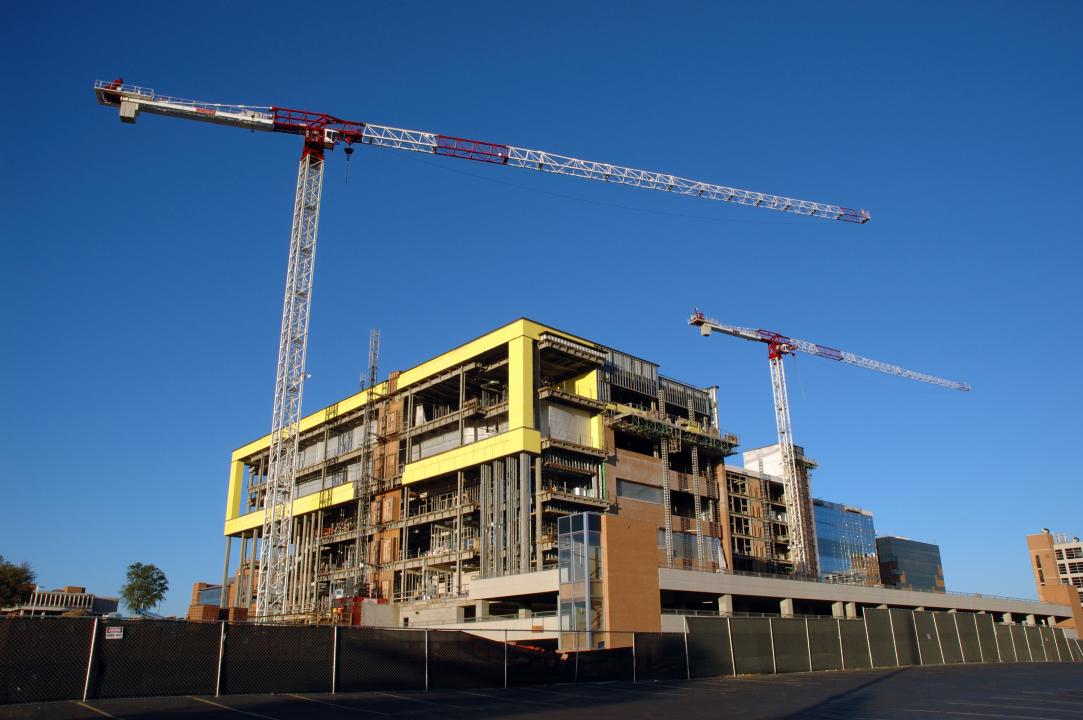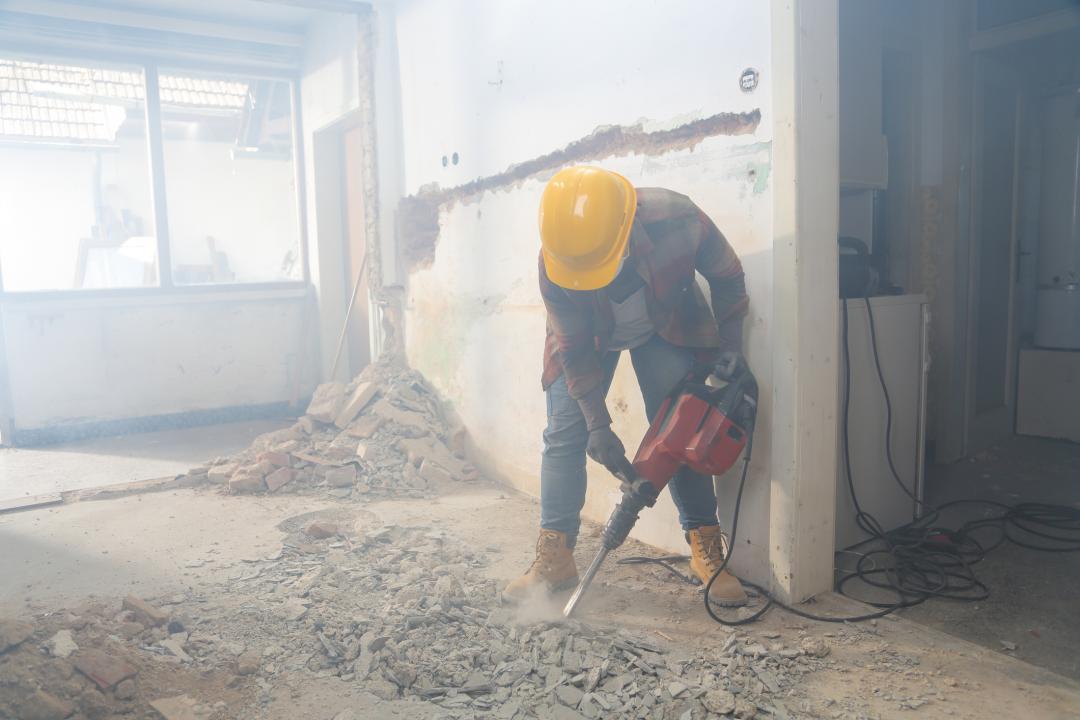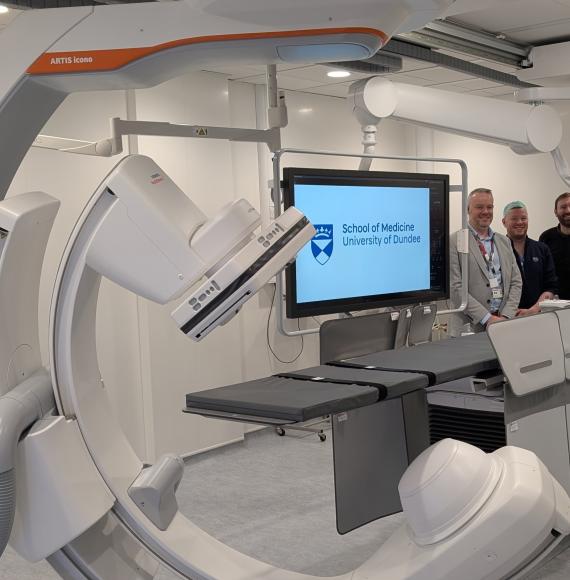Words provided by Hilditch Group, editorially reviewed by National Health Executive
The health care sector of any country is in a constant state of flux, as even in countries with a public health care system machinery and facilities have a finite life span and need to be routinely replaced. The worldwide average of money being spent on healthcare is 10% of a country’s Gross Domestic Product (GDP). The United Kingdom conforms to this average, the Republic of Ireland spends 8% of its GDP and with Germany tops the bill at 12% of GDP. Maintaining and replenishing a country’s medical estates and facilities is a highly grossing industry with £6.5bn being spent per in the UK alone.
There seems to be unlimited ways to spend money on building new facilities and the latest technological developments in bio-medical engineering. However, there does seem to be a shortage of advice on methods for sensibly reusing and recycling old medical devices and especially large imaging equipment and site facilities. This is not a highly grossing industry and one can only assume that this is not a glamorous one to be in either.
Even relatively small site clearances are expensive, but if you are clearing an entire hospital site the cost could easily be in the millions; with appropriate planning these costs can be moderated, and even off set, by the sale of any redundant assets. Every site clearance is different, there is no one single tried and tested method to ensure that everything runs smoothly.
We have compiled a list of our tops tips to help you replace old healthcare facilities, complete a successful site clearance and install large medical equipment:
Public Relations
The first step is always the most important, as this dictates the direction of the whole project and likelihood of a successful profitable out-come, as opposed to a project fraught with miscommunication and firefighting. The first step is not necessarily what you might think.
Before the first piece of equipment has been moved, plan or contract been put out to tender, public opinion should be taken fully into consideration. Strangely, the general public can be very attached to their old crumbling Victorian Hospital, with its draughts and dodgy plumbing. We have all seen countless cases in the media over the years where members of the public are up in arms, as they do not understand why the hospital needs to move to a new super-efficient site on the outskirts of town. It is highly recommended that a PR plan of action is created, to handle public relation issues. Now is the time for focus groups on which press release to go with!

Assessing the Project
When assessing what is coming out of a site, take the holistic approach and take stock the number of assets, their size, the logistics and time scales involved compared to their total worth. From this you can highlight the risks, potential liability issues, areas for potential financial returns. It is then possible to work out what the potential outcomes, objectives and key performance indicators the project will have, so that you can work out a rough budget to achieve your objectives.
Use an asset management company - Yes, this can be carried out by your team; however, this is often found be a very daunting prospect to auscultate, as public hospitals generally do not have a dedicated project management team and this part is so pivotal to the entire project. Most health organisations use an asset management company to carry out an initial site assessment, they will provide broad recommendations at little or no cost.
Segment items early on - Divide both electrical biomedical equipment and all other non-hospital specific equipment into categories; hospital owned useable, hospital owned redundant, non-transferring lease, donated and loan equipment.
It is very easy to lump loaned and leased electrical bio-medical devices in with working equipment, only to find that the lease company is asking for their equipment back when you are in the middle of moving locations.
Create a framework - After all factors of the project have been considered a dedicated framework can be created for how the project will be carried out, by whom and tender specification drawn up.
Do not waste time and money on inventory compilation - Trusts waste hundreds of thousands of pounds every year on employing consultants to carry out inventories that are of little practical use when clearing old sites. If the assets are of minimal worth then this cataloguing of equipment is rendered null and void.
Get rid of all potential waste - Ascertain what is green waste, what is potentially hazardous waste, what has to be recycled, waste electrical and electronic equipment (WEEE) as you will be disposing of potentially tons of equipment and furniture, much of which should be recycled.
Decontaminate - Are there areas that will need decontamination before contractors can come in? Decontaminants like asbestos and a leaky anaesthetic machine can pose life threatening hazards to an unsuspecting contractor.
Take into consideration all assets – All projects comprise of non-medical items, and every item, not just those of a medical nature, has to be taken into account of how it has to be dealt with or disposed of. Sufficient time will need to be allocated to sell or dispose of any additional assets, such as boilers, plant or radiography equipment and the hospital’s Estates Department will have to decommission these services.

Transferring Locations
A physical move of any description is complicated, and often reported as the most distressing event in any person’s life. It is often easy to focus on planning how patients and staff will transfer, and clearing the old site and equipment can be over looked.
Do not leave anything out of the Scoping Document - If you are clearing an old site and transferring over to a new site, then include the site clearance project in the initial scoping document of the new facility.
Emptying wards takes time - A clearance cannot commence until wards are empty; so, factor in contingency for potential delays with the new build that can result in staff not transferring when planned.
Buy only essential new equipment - Not all equipment can be transferred in the move as patient services need an uninterrupted service. New equipment will have to be purchased and old equipment left behind at the old site. This is especially relevant to fixed equipment such as magnetic resonance imaging machinery.
The old equipment left at the old site can then be sold.
Use the old site for storage – Once the last patient has moved successfully to the new site, you can take stock of what now needs to be done. The essential processes of the move have been done, so use the old site for the warehousing of the residual disused equipment.
Contracts
Contingency, contingency, contingency - If the site is being sold, then it is prudent to factor in a LOT of contingency when it comes to estimating delivery target dates. Not allowing enough time to vacate a site is a common occurrence and may well incur large penalty charges to the hospital. Do not, in any case, hand over the building to the demolition crew or its new owners the day after the last patient has left.
You will have old equipment to sell, and this takes time, as auctions have to be held and buyers have to collect their items.
Be careful of the small print - Contracts often contain unrealistic expectations of what the hospital Trust has to deliver when vacating a site. There have been reports that include the sterilisation of areas that would normally not be considered hazardous and inaccurate definitions of what fixtures and fittings are included when selling on redundant assets, that can lead to time consuming disputes.

Clearing the site
Appoint a Clearance Manager – Someone who has sufficient seniority is essential to either make decisions or ensure that decisions are made quickly, as time is of the essence with clearances. The Clearance Manager should be someone who knows the site well, preferably from the Estates Department so that they can easily access information on the site services. A good coordinator, who can work with the clearance contractors and liaise with the appropriate hospital managers to resolve problems, is essential. It is highly recommended that the Project Manager NOT undertake this task, as they often have a multitude of responsibilities; a separate individual should be appointed whose sole purpose is to oversee the clearance of the site.
Appoint a dedicated clearance agent – Find a company that can remove items that have no worth, sell items that have worth and has the experience to know the difference between the two. Be wary of agents who offer to buy equipment out right for a single price, as you will receive far under the residual market value for the items. These agents will buy the items cheap from you and sell the items on at a profit for them selves.
OJEU - In order to take on a clearance agent you will probably have to issue an Official Journal of the European Union tender (OJEU), unless the value of the clearance is quite low. You should allow yourself plenty of time to evaluate the applicants; always ask for a minimum of 3 references. Always follow these references up as competition is stiff and, sad to say, there are unscrupulous traders out there.
All Clearance Agents will tell you they are the best, but it is past results that really matter. Once you have signed with the agent you are stuck with them, so make sure that you are stuck with the right one. Remember the contingency rule, if you want the best price for your redundant CT scanner then the longer the clearance and/or resale agent has to sell it, the higher the potential price as other hospitals may be interested in your equipment.
This equipment may still have to be removed from site, so remember to factor in extra contingency time, and then double it.
Do not devalue your assets
Staff can save the project a great deal of money by following a few simple rules:
Keep track of all keys - Make sure that any keys to drugs cabinets, mobile x-rays etc. that are not transferring to the new site are securely taped to the item; without keys many items are worthless, but in almost every site clearance we have carried out, keys are not left behind. Attach any manuals or service records to the items.
Internal doors – Leave all internal doors unlocked unless it is essential that they are locked for safety reasons, otherwise you will be scrabbling around for keys at the last minute.
Refrigeration – Things often are overlooked in closed refrigeration units and drugs cabinets are frequent recidivists. Mortuary clearance is large enough to be obvious, but don’t be the first.
Brief the IT department – At some point they will be going around the site removing hard drives from computers, and unless you are very careful, they will remove the hard drives from all your redundant equipment, making it worthless, so brief them early. The realisation usually kicks just after you have just sold the item for thousands of pounds!

Work as a team
When one link in the chain of events breaks it has repercussions on everyone, from the staff nurse, to the patient transport manager, to the patients, the patients’ families and, of course, further down the line the clearance contractor and Facilities Department.
Focus on the task in hand
In order to cope with changes to the schedule, regular meetings with key personnel are essential. These should take place every day when the move is in full swing. However, the meetings should include those directly responsible for each relevant department and should be focused purely on the task in hand.
Be flexible
‘Plan for change’ rather than ‘change the plan’. Keep control of any change in circumstances ahead of time, rather than trying to muddle through, as this often leaves the project vulnerable to unpredictable cost escalations. Your team needs to be flexible as well, do not include anyone in your Project Team who is known to be difficult and doesn’t like change, you need Doers!
Security
You may feel the project is over and that you can move on, but any buildings and equipment is still your responsibility.
Breaking and entering - The site and the old disused buildings will attract much unwanted attention. We actually bore witness to a large number of people descending on the site designated for clearance and set up camp. In the 5 days that it took to get a court order to evict them, they had managed to strip most of the lead off the roof, tried hacking through a live cable to remove a generator and endangered the £200,000 sale of an MRI by cutting the power to the coil refrigeration. This was an extreme case, however, every single empty hospital site is an easy targeted, so be prepared.
Hire security from the outset - External security is always an issue, but managing the removal of a large quantity of equipment, personnel and patients also creates issues that managers may not be anticipating. Trying to oversee so many contractors makes it difficult to stop theft, as it is easy either for a contractor to purloin equipment or, more likely, thieves masquerading as contractors, to take advantage of the increased activity and vehicle movements. Close supervision is imperative and this is not something that you want to have to manage yourself on a daily basis.
This far from exhaustive check list takes no account of the myriad of issues that will have to be resolved, however, we hope that we have steered you away from the major pitfalls that we have seen befall hospital site clearances and projects over the decades.



















